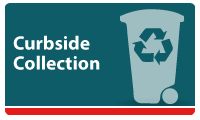Multi-Family Housing
Under the new Solid Waste Bylaw, multi-family housing properties that do not have curbside collection are required to separate garbage, organics and recyclables into appropriate collection containers, without contamination, prior to disposal.
Four key changes:
- Waste must be separated into multiple streams: Recyclable material, organic material and residual waste (garbage).
- Garbage must be placed in clear bags, with allowance for opaque privacy bags, not exceeding 10% of total waste.
- Mixed waste must be limited to no more than 20% of total waste in the first year (2018), reducing to 5% each year to a target of 5%.
- Building managers are required to provide educational material to residents, tenants, employees and contractors.
Support and Resources
To support multi-family properties and property managers with the changes, the District of Squamish is providing:
- Assistance with signage, informational materials, and implementation logistics.
- Guidance on waste room sizing, location and access.
Resources
- For residents
- For property managers
- How to plan your waste room/area
- Organics and Recycling Guide for Property Mangers
- Signage to download and print (Shared resources from Squamish-Lillooet Regional District website)
- How to prevent odours to avoid attracting wildlife and rodents.
- Residents: Prevent odours by wrapping odour-causing items such as fish and meat in newspaper or freeze them until ready to discard.
- Property Managers: To prevent odours to avoid attracting wildlife, keep the organic bin in a cool space, ask for more frequent collection and consider asking for bins to be washed or replaced. Make sure your garbage room is wildlife proof by keeping doors secured and bin lids down and locked at all times. Consider adding a seal to the bottom of your door.
Solid Waste Changes FAQ
-
Why these changes?
Squamish sent an average of 676 kg of waste per person to the Squamish Landfill in 2016. A landfill audit in 2016 revealed that more than 65% of that waste going to the landfill could have been recycled or composted.
- The requirement for multi-stream separation at multi-family housing properties is expected to reduce this number.
- The requirement of clear plastic bags is intended to increase participation from those that do not presently divert recyclables or organic material from the waste stream.
- Diverting waste will maximize the remaining life of the landfill, delaying further costly solutions. Learn more about the landfill expansion project.
-
When do these changes come into effect?
The updated solid waste bylaw was adopted in September 5, 2017. A transition period provides time for necessary changes to infrastructure and systems to take place.
-
How impactful are these changes expected to be?
An audit conducted in May 2016 revealed that more than 65% of materials ending up in the landfill could have been recycled. Organics collection in multi-family properties should help divert up to 30% of the volume of garbage generated. The audit also identified on-premise sorting options as a significant factor in waste diversion.
-
What is the goal of the Zero Waste Strategy?
The goal of the Zero Waste Strategy is to achieve an average 350 kg per person per year disposal rate by 2020 with a corresponding diversion rate of 75%. The diversion rate is how much waste is diverted from the landfill, and is either recycled or composted instead. Click here to learn more about the Zero Waste Strategy.
